When I was working on the recently published Beauty & Beast, written by Olivia McCannon and published by Design for Today, I thought it might be a lovely idea to additionally make a toy theatre version of the book. It would be sold separately as an item in its own right, with a script by Olivia. However I knew it couldn’t be a simple matter of recreating the illustrations reduced and trimmed to fit a toy stage. It would require a complete translation into a new language, the language of the toy theatre. In this I was aided and abetted by Olivia, who absolutely understood the nature of translation and transformation, and was able to brilliantly magic her ravishingly beautiful and heartrending text for Beauty & Beast, into a clever, funny, galloping romp of a pantomime for the toy theatre. Artist David W. Slack, too, came aboard, and began translating my illustrations into what would work on a toy theatre stage. We three took one thing and turned it into another. I cannot tell you how we did it. The process defies analysis and certainly defeats the retelling. I found at all stages I was working intuitively. I think we all were. But here, by way of explanation, I’ve illustrated this piece with images of the toy theatre, set against the illustrations which inspired them.
Even the name of the art form is deceptive: Toy Theatre. The word ‘Toy’ makes it sound juvenile, a thing of the nursery, and in fact the toy theatre was born in the eighteenth century and reached the dizzying heights of its invention in the nineteenth as a plaything of young people. (Though I suspect that a lot of those who played most were not children at all.) It sprang out of a desire of theatre-goers to have souvenirs of the productions they’d enjoyed, and sensing the commercial potential of this, the printmakers of the day began first to offer portrait sheets of actors in their roles, and later, ‘toy’ stages on which small, cut-out paper actors could strut and gesture through melodramas, romances and pantomimes. (Toy theatre makers were only able to thrive where there was a lively theatre industry on which they could draw for inspiration and their market, which is why the English tradition of toy theatres developed in and around London’s theatre-land.) Though modern toys would eventually displace toy theatres, the tradition persisted culturally if marginally in Britain, largely because the last printer/seller of toy theatres, Benjamin Pollock, managed to scratch a living into the twentieth century.
After Benjamin Pollock, the faded memories of toy theatre clung on in the small and privately owned Pollock’s Toy Museum in Scala Street, which this year closed its doors for the last time (though there are plans to one day open it in a new premises), and in Benjamin Pollock’s Toyshop in Covent Garden, which is a modern business bearing an old name selling mainly modern toys, but also a range of reproduction antique toy theatres and toy theatres by contemporary designers, myself included.
Below: illustration from Beauty & Beast of Beast carrying Beauty to her chamber, and the set design of Beauty’s room from the toy theatre adaptation:
I was given a set of yellowing toy theatre sheets to cut-out and play with when I was a child, a gift of the actor/author Bill Meilen. Some bore the name Benjamin Pollock. I made my own toy stage to hold them. When I left Wales to attend school in London, I discovered the Pollock’s Toy Museum and the die was cast. At weekends and with time my own, I haunted the place. Toy Theatre got a grip on my young heart and has held it fast for a lifetime.
But how does it work? How may a production made for a real stage shrink to what works on a toy stage? (Or in this case, how does a wide-format illustration made for a book shrink to the square aperture of a toy stage?) It’s not simply a matter of scaling down, though that can be done too, and often is, and with mainly poor results. By some alchemy when the stage shrinks, then new rules apply, and new ways of creating and seeing have to be devised.
The toy theatre may imitate the backdrops, wings, headers and cut-cloths of nineteenth century stages, but there has to be a translation to the reduced form. Think of it this way. If you took a delicious sweet from its wrapper and popped it into your mouth, it would be delightful because the small size suits the intensity of flavour. There would not be a better eating experience were it to be enlarged to a giant size. It exists, at its best, at the scale intended. So it is with the toy theatre, only the other way around.
When you take something devised as life-sized, it is not better for being successfully shrunk to small. It becomes too cluttered, too visually indigestible, too busy. No, the toy theatre has to be a new thing. It has to be tailored to its constraints, though as is so often the way with creativity, the limitations can be made to work to advantage. It is not the real world, but an absolutely unique one, with different rules and languages. At its best it can be a doorway to another country, the way past the coat-hangers into Narnia or down the rabbit-hole into Wonderland. I’ve been tumbling down the rabbit-hole of toy theatre all my life, and I’m tumbling still.
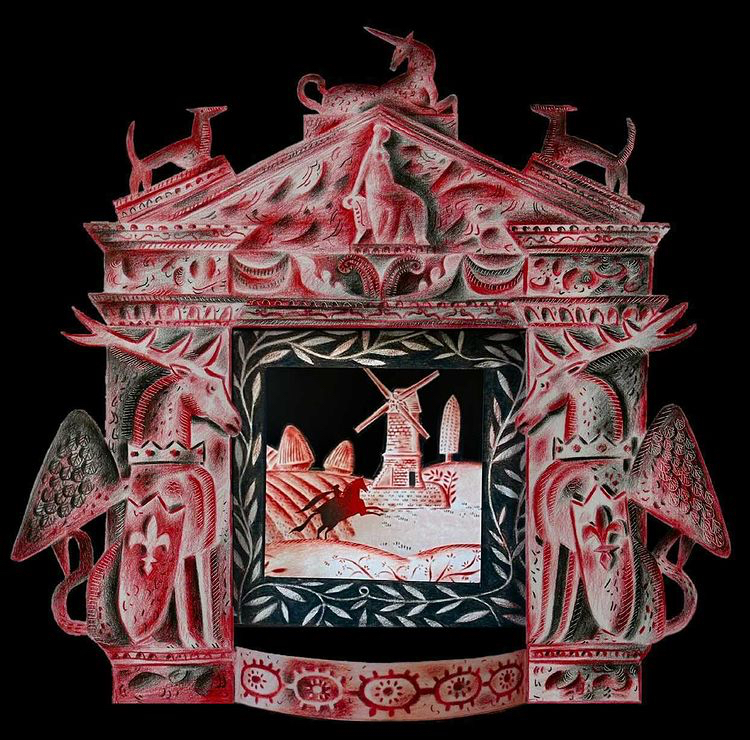
Beauty & Beast, a retelling of an old tale with text by Olivia McCannon and illustrations by Clive Hicks-Jenkins, may be purchased direct from the publisher, as can the Beauty & Beast Toy Theatre:

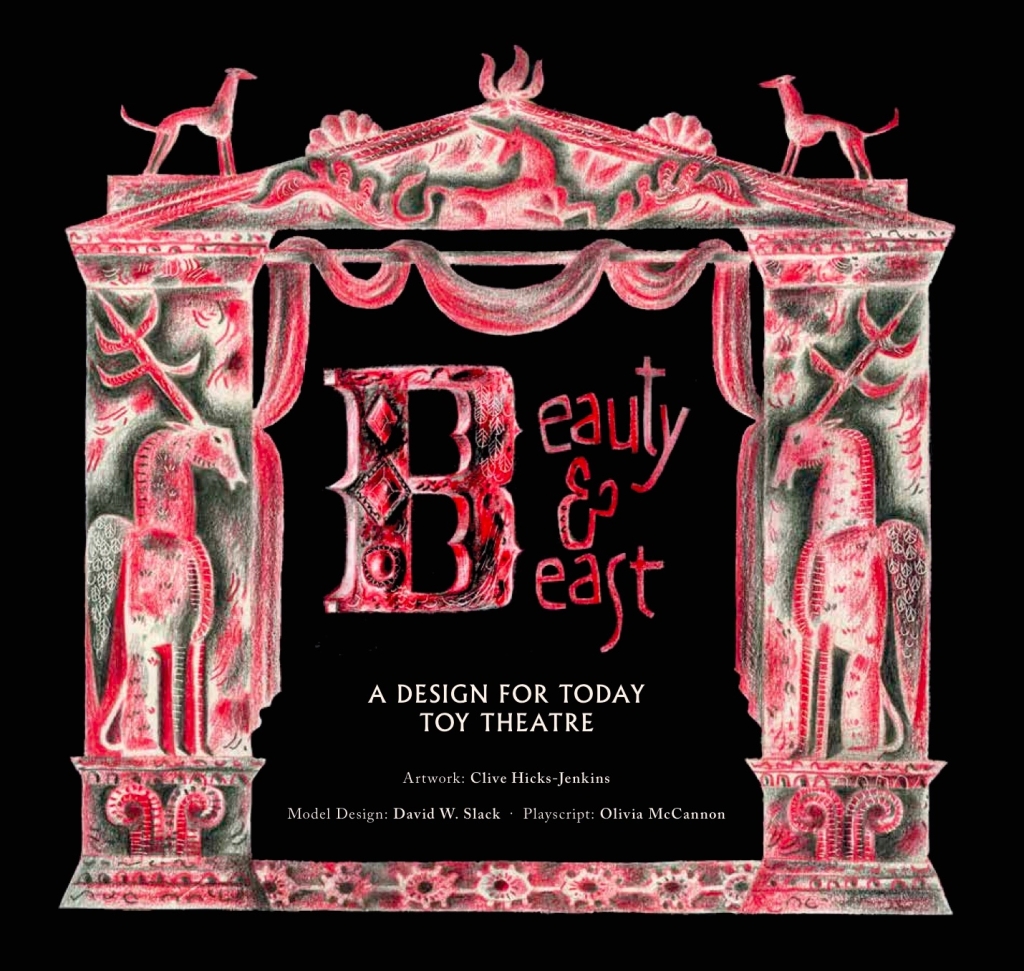
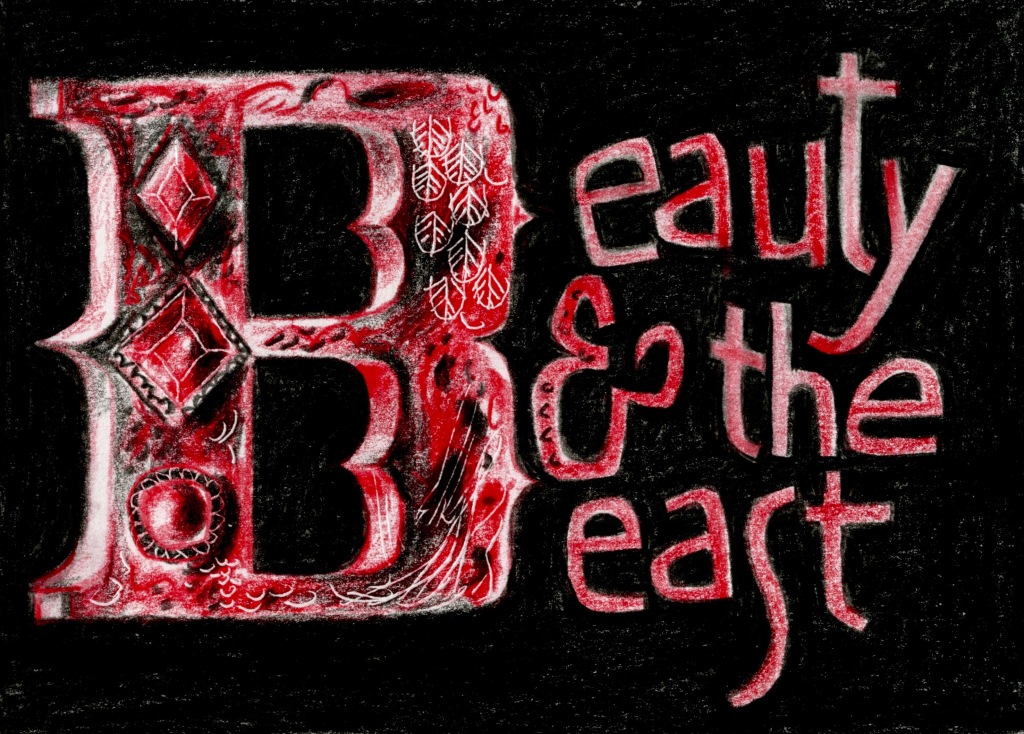

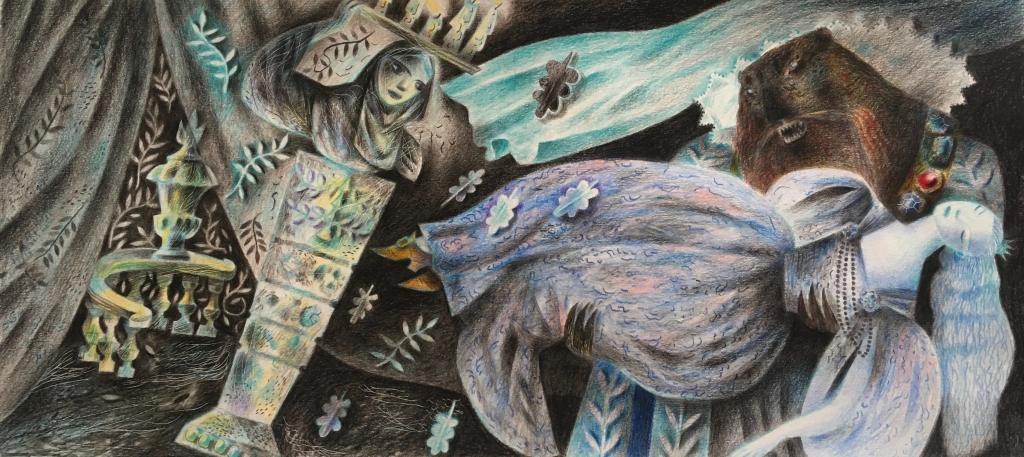
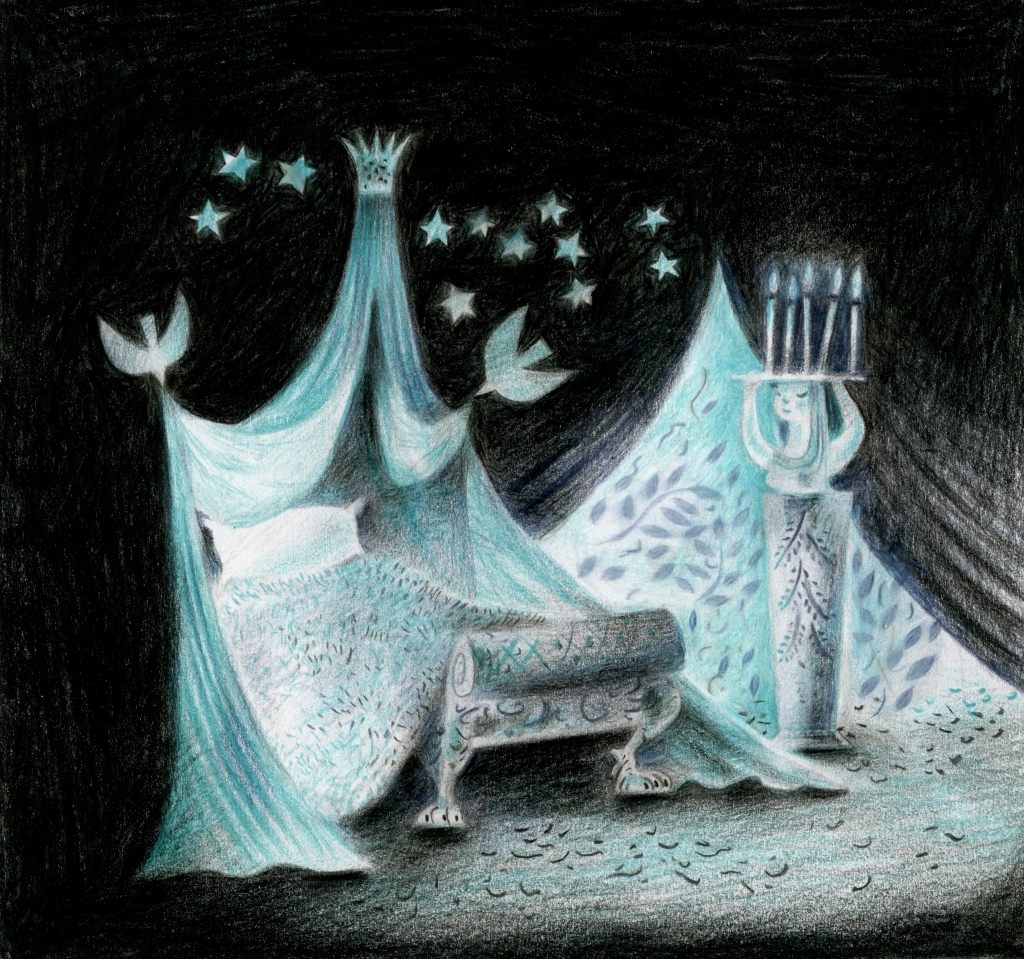
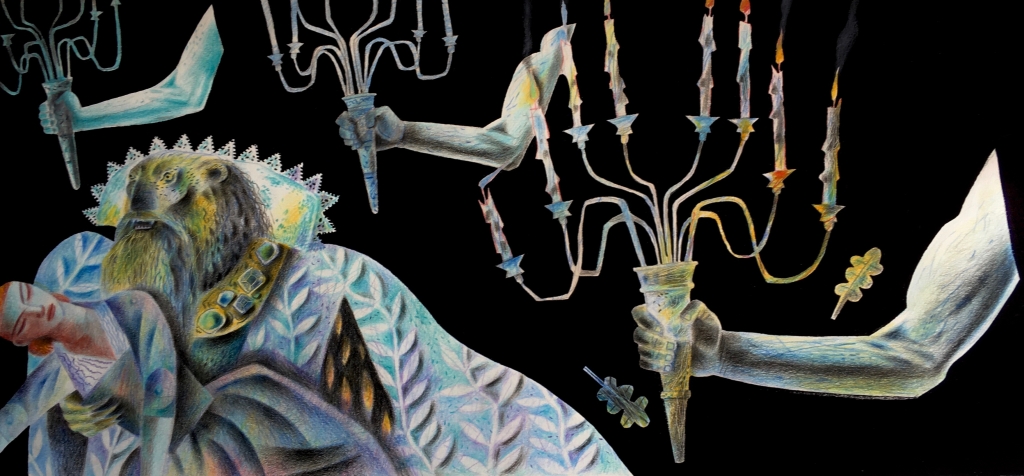


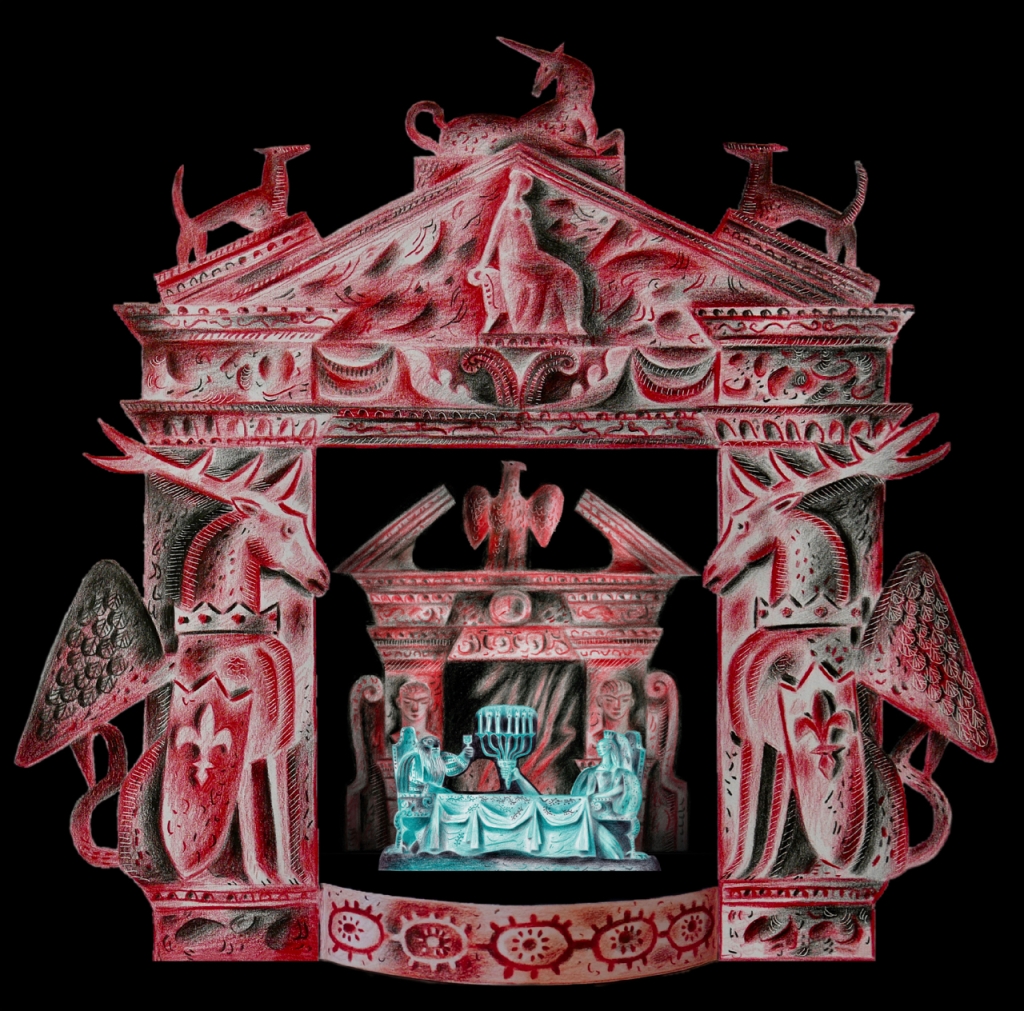

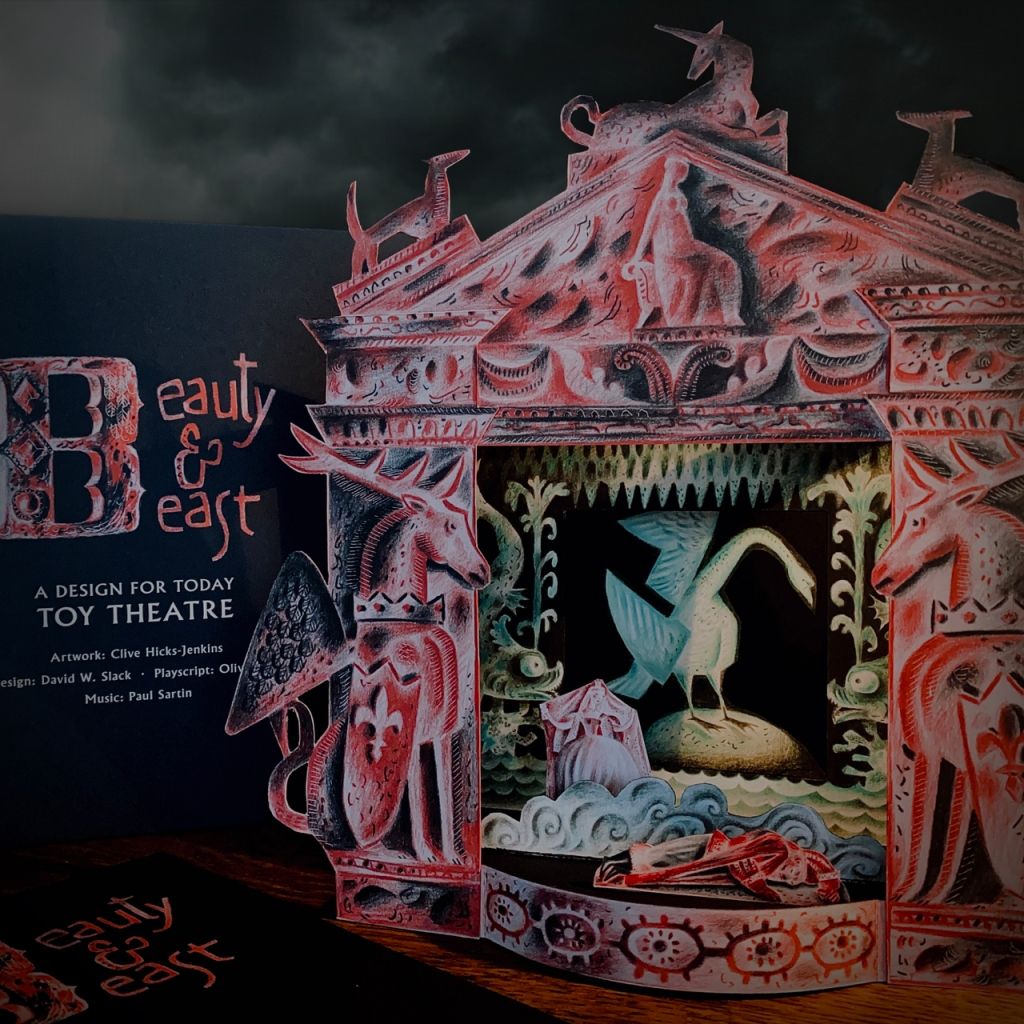
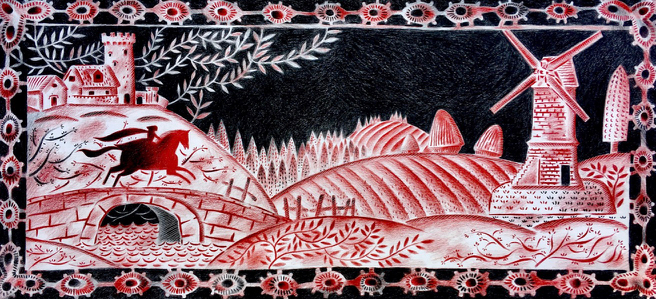
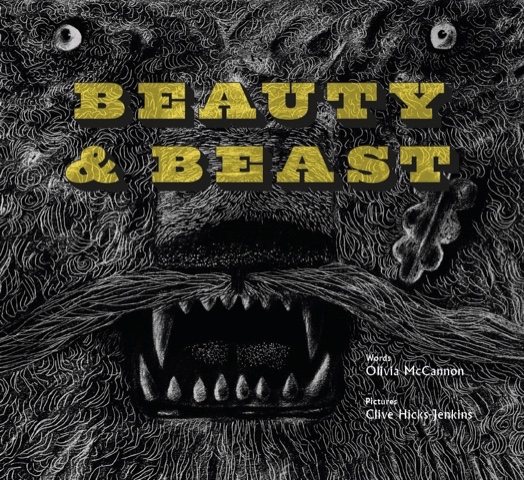
Love for the liminal theatre of small, luminous dreams…
Clive, astounding! Wonderful “as usual!” I wonder if there would ever be a video?? xo
Hello Laura. There is a video. You can see an entire performance of Beauty & Beast at YouTube, with Jennifer Castle as the Narrator. Click on the link:
You truly are a treasure!
merveillous!